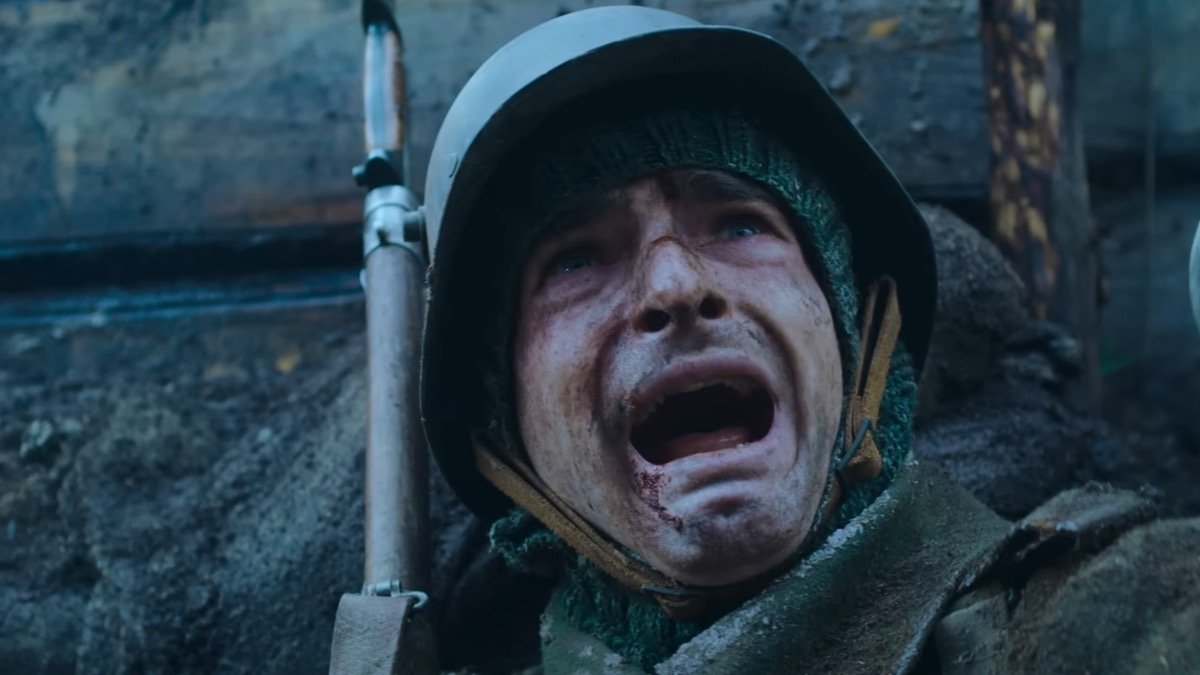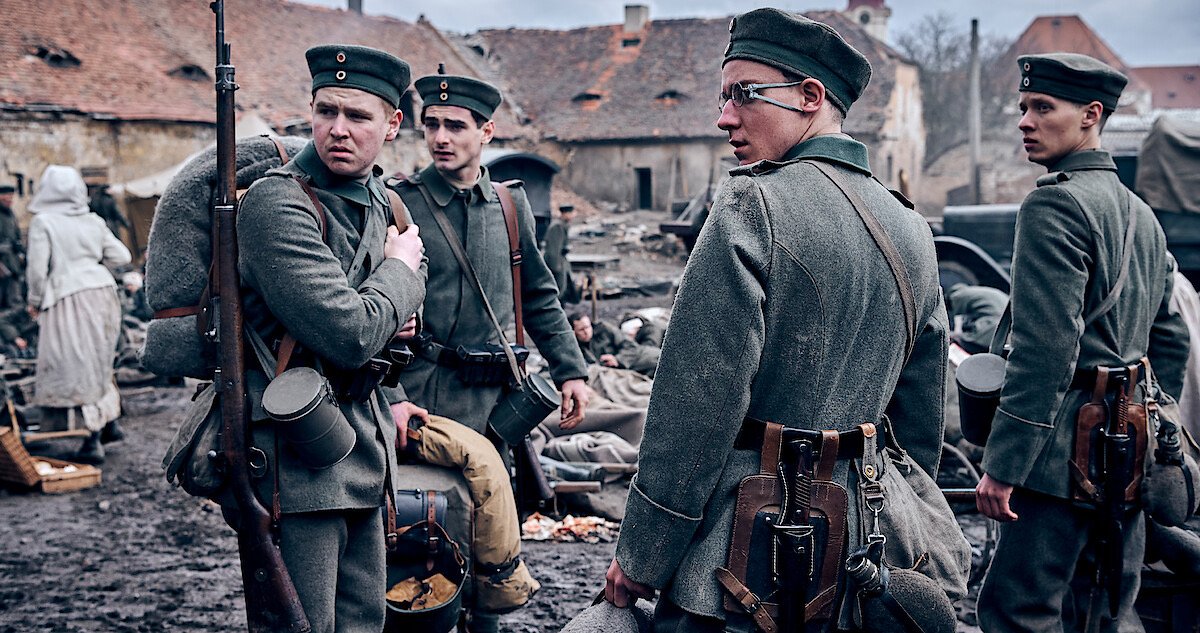All Quiet on the Western Front (dir. Edward Berger, 2022) — Review
A recent strain of war movies have made a point of hyperrealism, with Dunkirk, 1917 and the like — perhaps even The Crown — claiming that quasi-deepfake re-enactments of national trauma mine deeper engagement from modern audiences. This point was more convincing during the neoliberal lull of the 80s and 90s, when the practice of nice, middle-class white teenagers killing each other in Europe was largely shunted aside. When the credits roll, the All Quiet on the Western Front of 2022 will leave the viewer asking at least one traditional Remembrance Day question: what was the point of this colossal waste of life and resources?
All Quiet on the Western Front, the 1929 novel by Erich Maria Remarque, runs to about 200 pages. In that modest span, the author conveys both the abject horror and the incomprehensible scale of the First World War, through a group of German teenagers recruited from their school classroom for the trenches. It’s a character-driven view of a truly inhuman conflict: Remarque doesn’t let the technological advances that made the ‘Great War’ so devastating get to his narrative. Rather than attempting a literal depiction of monumental suffering, the author drags his audience into the raw emotional core of his subjects, to dash them violently for maximum effect. The Netflix adaptation, on the other hand, runs over two hours and verges on desensitizing torture porn.
It’s an odd choice to try and compete with real life in terms of sheer, ham-fisted misery, which the film does not only with graphic violence but with two additional subplots. Cutting out the school-centric start of the novel — where protagonist Paul’s jingoistic teacher drives his charges to war with promises of patriotic glory — Berger’s version veers into historical-revisionist narration worthy of Call of Duty. It is also worth noting that this is the first German adaptation, and Germany’s official entry for the 2023 Academy Awards. Berger’s intentions are obviously sincere, but in trying to make such an objective case for the horror of war — an inherently irrational experience — the film may have missed the author’s mark.
Much of Remarque’s impact comes from his skilful juxtaposition of the everyday and the horrific: war is not monumental but subtly approached through relatable characters, who carry the reader into increasing numbness to meaningless horror. Berger’s opening sequence throws this approach on its head: we join the young Paul Baumer (Felix Kammerer) and his classmates in the depths of hell, after a highly symbolic opening sequence of birdsong, fauna, cannons, and grisly wounds. It almost has the feel of a Crimewatch reenactment.
Visual depictions of war have been around for a long, long time: you can walk around most national art museums and see any number of vast, neurotically constructed canvases, deploying all sorts of symbolic language to express the unutterable carnage that flashed before the painter’s eyes some centuries ago. Literalism rarely succeeds in this effort. And yet, literalism is exactly the path which Berger takes: rather than leave the audience to bond with his characters, and then experience utter betrayal through their eyes, the director replaces an adolescent perspective with the pretended comprehension of the officer classes. Just in case viewers have been scrolling TikTok during the good bits, the film adds a plot about diplomat Matthias Erzberger (Daniel Bruhl) seeking an armistice, and some podcast-adjacent scenes between one General Friedrichs (Devid Striestow) and his chum Major Von Brixdorf (Sebastian Hulk). The presence of actual German actors in these scenes gives the film a much-needed spritz of conviction, but this largely evaporates when they cut back to yet another CGI mutilation set piece.
By robbing the novel’s characters of their emotional agency — of the voice which Remarque, himself a veteran, sought to give to his fellows — this version of All Quiet on the Western Front veers closer to the dictatorial schoolteacher of the original than the protagonist. With its irreproachably rendered uniforms, injuries, and trench-side camaraderie, the film certainly captures the narrative components of the war: but without the requisite emotional investment, these are meaningless.




